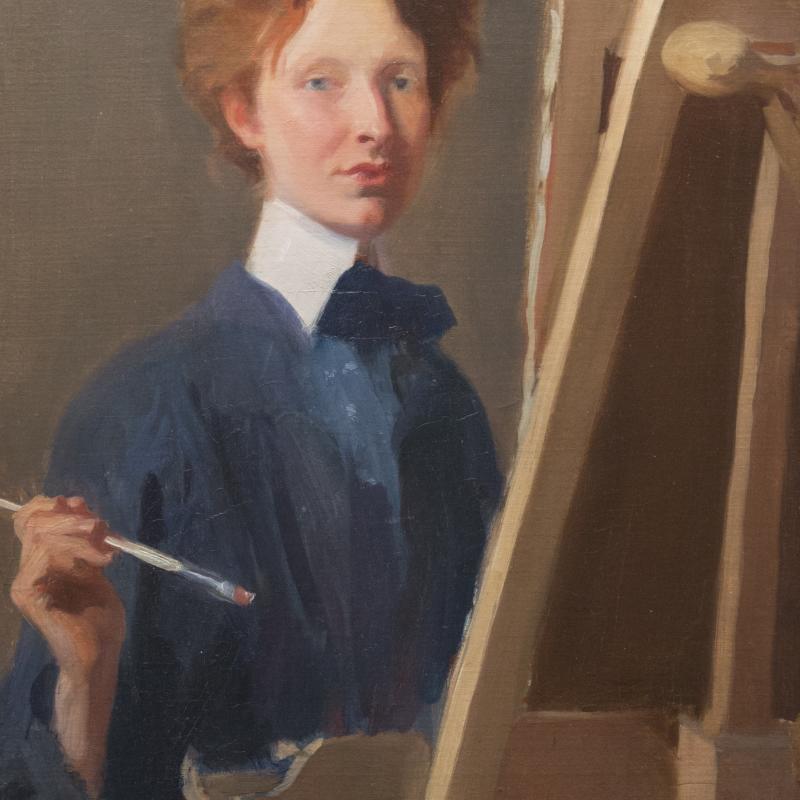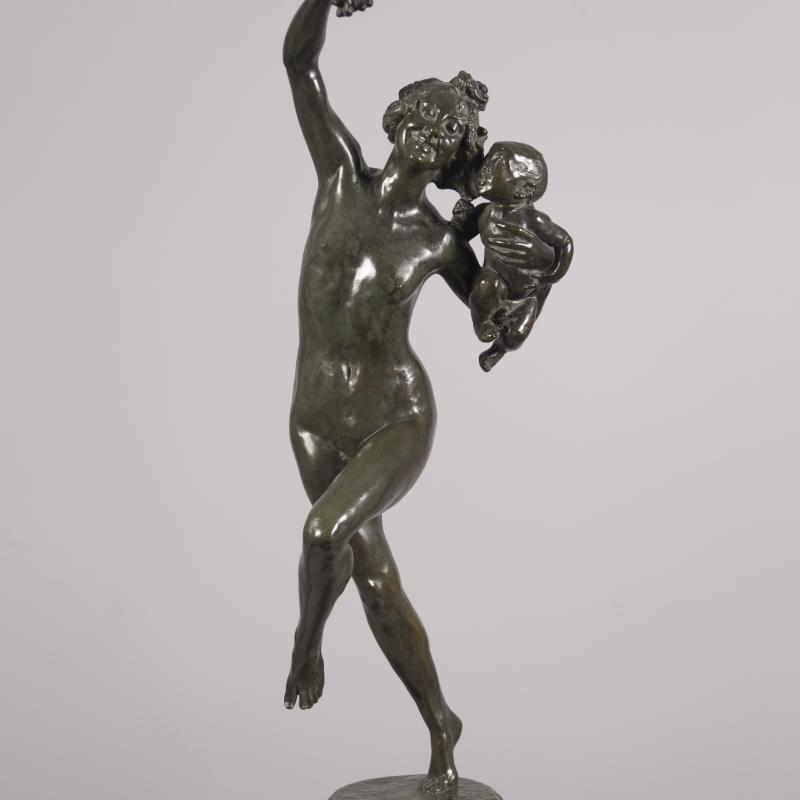-
 Frederick William MacMonniesPortrait of Ellen Emmet, 1898-99Oil on canvas32 x 21 1/4 inches Framed 39 x 28 1/2 inchesUnsigned
Frederick William MacMonniesPortrait of Ellen Emmet, 1898-99Oil on canvas32 x 21 1/4 inches Framed 39 x 28 1/2 inchesUnsigned
-
 Frederick William MacMonniesBacchante with Infant Faun, 1894Bronze, dark green and brown patina33 1/8 x 12 x 10 inches,
Frederick William MacMonniesBacchante with Infant Faun, 1894Bronze, dark green and brown patina33 1/8 x 12 x 10 inches,
Base: 10 inches diameterSigned: F. MacMonnies
Marked: Roman Bronze Works N-Y- 1894
Overview
Frederick MacMonnies, born in Brooklyn, New York started his career by working as a studio hand for Augustus Saint-Gaudens (1848-1907). Soon afterwards, MacMonnies enrolled in modeling classes at the Cooper Union and drawing classes at the National Academy of Design. In 1884 MacMonnies moved to Paris and spent time at the Académie Colarossi and the École des Beaux-Arts. Unfortunately, a cholera epidemic broke out in Paris and forced him to leave. Subsequently, MacMonnies traveled to Germany and then back to the United States, where he spent another year working with Saint-Gaudens before returning to Paris to begin a two-year tenure at the École des Beaux-Arts. At this time MacMonnies also worked in the studios of Jean Falguière and Antonin Mercié.
MacMonnies’s first artistic achievement which helped to establish his reputation was his plaster model of Diana, which he exhibited at the Paris Salon in 1889. MacMonnies was then commissioned internationally to create many sculptures and, although he chose to live in Paris, many of his public and private sculptural commissions were in the United States.
In 1893 MacMonnies received a fifty thousand-dollar commission for the World's Fair Exposition in Chicago. The work he created for this commission titled The Barge of State, a thirty-eight figure extravaganza, made him internationally famous.
Frederick MacMonnies was one of the first American sculptors to recognize the potential market of the middle class. He created a system, therefore, where he copyrighted his works and then contracted with foundries to produce some of his figures in multiple sizes.
Awards
Art Club of Philadelphia, Gold medal
International Exposition, Gold medal, 1900
Chevalier of the Legion of Honor (1896)
Commandeur of the Legion of Honor (1933)
Exhibitions
World's Fair Exposition, 1893
Paris Exposition, 1900
Metropolitan Museum of Art
Prospect Park, Brooklyn, NY
Whitney Museum of American Art
Museums and Public Collections
Amherst College, Mead Art Museum
Boston Museum of Fine Art
Cleveland Art Museum
Grand Army Plaza, Brooklyn, New York, contributions to the Soldiersâ and Sailorsâ Memorial Arch
Hearst San Simeon State Historical Monument, California
Huntington Library, Art Collections and Botanical Gardens, San Marino, California
Library of Congress, Figure of Shakespeare and the Central Door to the entrance
Los Angeles County Museum of Art
New York Public Library, Thomas Hastings marble bust
Metropolitan Museum, New York
Museum of Fine Arts, Houston
National Gallery of Art, Washington, D.C.
Norton Gallery and School of Art, West Palm Beach, Florida
Princeton University Art Museum
Saint Louis Art Museum
Terra Museum of American Art, Chicago